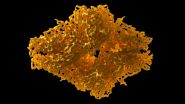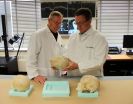(Press-News.org) This news release is available in Spanish.
(SACRAMENTO, Calif.) -- Researchers at UC Davis have developed a new intervention that identifies potentially depressed mothers and encourages them to seek treatment. The Motivating our Mothers (MOM) program takes a unique approach, relying on pediatricians rather than the mother's doctor for diagnosis. In the study, mothers were given a short survey to assess whether they needed additional care. Those who identified depression symptoms were then coached by a research assistant to seek further help.
The program had a remarkable impact. Nearly 74 percent of mothers in the intervention group sought additional help, compared to around 54 percent in the control group. The research was published recently in the journal Academic Pediatrics.
"This is one of the first studies to take on the role of the pediatrician in not only identifying depression in mothers but also helping them take the next step," said Erik Fernandez y Garcia, associate professor of clinical pediatrics and lead author on the study. "The hope is that once we've refined the intervention and presented it to pediatricians, they will feel more comfortable about addressing depression with mothers of their patients."
The study targeted English-speaking mothers, with children between 0 and 12 years, who were given a simple, two-question survey about the core symptoms of depression. Mothers who showed symptoms received targeted education that focused on removing the stigma associated with depression and how treatment could improve their children's health. They also received follow-up calls two days later to reinforce the message.
The researchers set a high bar for success, using an active control group that was also screened for depression and given depression education and advice. However, the control intervention lacked the targeted messaging designed to destigmatize depression and link treatment to improved child health.
Pediatricians may be the ideal conduits to help depressed mothers seek care, according to Fernandez y Garcia. Many young mothers rarely visit their own physicians but make frequent trips to the pediatrician's office - multiple times during a child's first two years and once a year after that.
In addition to having more opportunities, pediatricians may also be more effective at broaching the subject, as they can better explain how seeking treatment improves children's health.
"Pediatricians are in a position to talk to moms about the effects of depression on their children and use that as a motivation to get their symptoms evaluated," said Fernandez y Garcia.
In some ways, the MOM intervention was even more effective than the researchers had expected. For example, many mothers sought care from a number of different sources simultaneously, including spiritual counselors and mental health and medical practitioners.
The next step is to refine the program and conduct a similar study including Spanish-speaking mothers.
"If I can give pediatricians an efficient intervention to implement in their practices, we can really increase our ability to identify women with depression," said Fernandez y Garcia. "We can help them feel better and the kids will have better outcomes as well, so it has a positive effect on everybody's well being."
INFORMATION:
Other UC Davis authors were Jill Joseph, Machelle Wilson, Ladson Hinton, Gregory Simon, Evette Ludman, Fiona Scott and Richard Kravitz.
This study was funded by the National Center for Advancing Translational Sciences, grants UL1 TR000002 and 1K23MH101157-01A1 and by a grant from the University of California Davis Department of Pediatrics Children's Miracle Network, as well as the University of California Davis Office of the Dean and 5K24MH07275605.
UC Davis Children's Hospital is the Sacramento region's only nationally ranked, comprehensive hospital for children, serving infants, children, adolescents and young adults with primary, subspecialty and critical care. It includes the Central Valley's only pediatric emergency department and Level I pediatric trauma center, which offers the highest level of care for critically ill children. The 129-bed children's hospital includes the state-of-the-art 49-bed neonatal and 24-bed pediatric intensive care and pediatric cardiac intensive care units. With more than 120 physicians in 33 subspecialties, UC Davis Children's Hospital has more than 74,000 clinic and hospital visits and 13,000 emergency department visits each year. For more information, visit http://children.ucdavis.edu.
A new study shows that it is possible to use an imaging technique called cryo-electron microscopy (cryo-EM) to view, in near-atomic detail, the architecture of a metabolic enzyme bound to a drug that blocks its activity. This advance provides a new path for solving molecular structures that may revolutionize drug development, noted the researchers.
The protein imaged in this study was a small bacterial enzyme called beta-galactosidase; the drug to which it was bound is an inhibitor called phenylethyl-beta-D-thiogalactopyranoside (PETG), which fits into a pocket in the ...
Messenger RNA (mRNA) levels dictate most differences protein levels in fast-growing cells when analyzed using statistical methods that account for noise in the data, according to a new study by researchers from the University of Chicago and Harvard University.
The research, published May 7, 2015 in the journal PLOS Genetics, counters widely reported studies arguing that the correlation between mRNA transcript levels and protein levels is relatively low, and that processes acting after mRNA transcription override mRNA levels. Instead, the authors argue, these conclusions ...
Boston, MA -- Researchers at Harvard T. H. Chan School of Public Health and the Broad Institute have identified a protein on the surface of human red blood cells that serves as an essential entry point for invasion by the malaria parasite. The presence of this protein, called CD55, was found to be critical to the Plasmodium falciparum parasite's ability to attach itself to the red blood cell surface during invasion. This discovery opens up a promising new avenue for the development of therapies to treat and prevent malaria.
"Plasmodium falciparum malaria parasites have ...
Hereditary blindness caused by a progressive degeneration of the light-sensing cells in the eye, the photoreceptors, affects millions of people worldwide. Although the light-sensing cells are lost, cells in deeper layers of the retina, which normally cannot sense light, remain intact. A promising new therapeutic approach based on a technology termed "optogenetics" is to introduce light-sensing proteins into these surviving retinal cells, turning them into "replacement photoreceptors" and thereby restoring vision. However, several factors limit the feasibility of a clinical ...
PRINCETON, N.J.--The measles virus is known to cast a deadly shadow upon children by temporarily suppressing their immune systems. While this vulnerability was previously thought to have lasted a month or two, a new study shows that children may actually live in the immunological shadow of measles for up to three years - leaving them highly susceptible to a host of other deadly diseases.
Published in the journal Science, the study, led by researchers from Princeton University's Woodrow Wilson School of Public and International Affairs and Department of Ecology and Evolutionary ...
This news release is available in Spanish. Although the genetic blueprint of every cell is the same, each cell has the potential to become specific for a tissue or organ by controlling its gene expression. Thus, every cell "reads" or "switches on" a particular set of genes according to whether it should become a skin, heart, or liver cell. Launched by the National Institutes of Health (NIH) in 2010, the GTEx Project aims to create a reference database and tissue bank for scientists to study how genomic variants affect gene activity and disease susceptibility.
Following ...
CAMBRIDGE, Mass--Researchers have succeeded in creating a new "whispering gallery" effect for electrons in a sheet of graphene -- making it possible to precisely control a region that reflects electrons within the material. They say the accomplishment could provide a basic building block for new kinds of electronic lenses, as well as quantum-based devices that combine electronics and optics.
The new system uses a needle-like probe that forms the basis of present-day scanning tunneling microscopes (STM), enabling control of both the location and the size of the reflecting ...
For years, scientists have been puzzled by the presence of short stretches of genetic material floating inside a variety of cells, ranging from bacteria to mammals, including humans. These fragments are pieces of the genetic instructions cells use to make proteins, but are too short a length to serve their usual purpose. Reporting in this week's Cell, researchers at Rockefeller have discovered a major clue to the role these fragments play in the body -- and in the process, may have opened up a new frontier in the fight against breast cancer.
Specifically, Sohail Tavazoie ...
Every inch of our body, inside and out, is oozing with bacteria. In fact, the human body carries 10 times the number of bacterial cells as human cells. Many are our friends, helping us digest food and fight off infections, for instance. But much about these abundant organisms, upon which our life depends, remains mysterious. In research reported May 7 in Cell, scientists at Rockefeller finally crack the code of a fundamental process bacteria use to defend themselves against invaders.
For years, researchers have puzzled over conflicting results about the workings of a ...
EAST LANSING, Mich. - Much like a finger leaves its own unique print to help identify a person, researchers are now discovering that skull fractures leave certain signatures that can help investigators better determine what caused the injury.
Implications from the Michigan State University research could help with the determination of truth in child abuse cases, potentially resulting in very different outcomes.
Until now, multiple skull fractures meant several points of impact to the head and often were thought to suggest child abuse.
Roger Haut, a University Distinguished ...

